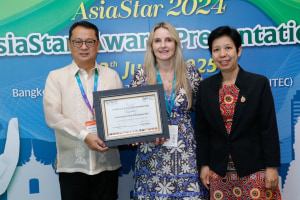Two new distribution centres in western Sydney will see Woolworths Group close its Yennora, Mulgrave and part of its existing Michinbury sites. The fully- and semi-automated warehouses will see greater efficiencies, environmental savings and increased capacity for growth but will result in job losses.
The supermarket giant will partner with Qube Holdings to develop an automated regional distribution centre and a semi-automated national distribution centre at Moorebank Logistics Park in Sydney.
Woolworths will invest $700-780 million in the technology and fit out and has signed an initial 20-year lease with Qube. Qube will invest $420-460 million in the build.
While still subject to planning approval, Woolworths said it would provide greater capacity for future growth.
Green credentials
The proposal builds on the same technology deployed at the company’s Melbourne South regional distribution centre (MSRDC), which has been operational for more than a year.
Infrastructure investments from state and federal governments at the park were key to Woolworths’ site selection, the company said.
“The direct rail access to Port Botany will provide strategic benefits for Woolworths’ transport network and help remove at least 26,000 of its truck movements from NSW roads each year,” it said.
The two centres are expected to open in 2023-24 with each warehouse is targeting a Five Star Green Star Design and As-Built rating. They will incorporate sustainability initiatives: solar PV systems; LED warehouse lighting; and rainwater harvesting.
Greater efficiencies
Graham said the automation will build tailored pallets for specific aisles in individual stores. “[It will help] us improve on-shelf product availability with faster restocking, reducing congestion and enabling a safer work environment for our teams with less manual handling.
He said the company had “learnt a lot” from the MSRDC project. “After hitting new volume milestones and dramatically improving the speed and accuracy of deliveries, MSRDC is now consistently supporting our Victorian stores, giving us confidence that now is the right time to invest in this new technology for our New South Wales network.”
“The new facilities will also progress our localised ranging efforts, with the ability to hold many thousands more products centrally than we can in our existing facilities,” Graham said.
Size, scale and savings
Qube managing director Maurice James said: “Woolworths’ long-term commitment will reinforce the commercial appeal of this nationally important infrastructure and freight project.
“The benefits of railing containers direct from Port Botany to a terminal co-located with warehousing across a site the size of the Sydney CBD will deliver Woolworths time and cost efficiencies. Our project team is looking forward to working with the Woolworths team in delivering an optimal solution for their operations.”
The proposed Sydney Regional Distribution Centre will be a 34,600m2 automated site for fast moving packaged grocery, health and beauty and general merchandise. It is expected to receive and dispatch more than 6000 products from around 800 suppliers to more than 266 stores.
The semi-automated National Distribution Centre covers 40,700m2 and is expected to receive and dispatch roughly 9000 products from more than 900 suppliers to more than 1020 stores. Product lines will include slower moving packaged grocery and general merchandise.
Closures and redeployment
The Moorebank facilities will replace the current ambient operations at Woolworths’ Sydney Regional Distribution Centre (Minchinbury), Sydney National Distribution Centre (Yennora) and Melbourne National Distribution Centre (Mulgrave).
These sites currently employ 1350 people and are expected to close by 2025. The new operations are expected to employ 650 people.
Temperature controlled fresh food distribution, which employs 460 people, will continue out of Sydney Regional Distribution Centre (Minchinbury).
Woolworths chief supply chain officer Paul Graham said the company was “absolutely committed” to supporting staff through “what will undoubtedly be a challenging transition”.
“We explored options to upgrade our existing sites, but the ageing infrastructure just won’t be able to support the growth in volumes we’ll need to service in the years ahead.
“We’ll look to offer redeployment opportunities wherever possible, as well as providing a wide range of support and career transition services to our team well before site closures.”
The company said it had committed to a long-term investment in supporting its team members with the skills and training required for the workforce of tomorrow. “Woolworths Group will partner with third-party organisations to ensure team members are prepared for the evolving changes technology and innovation will bring to the workforce,” it said.






